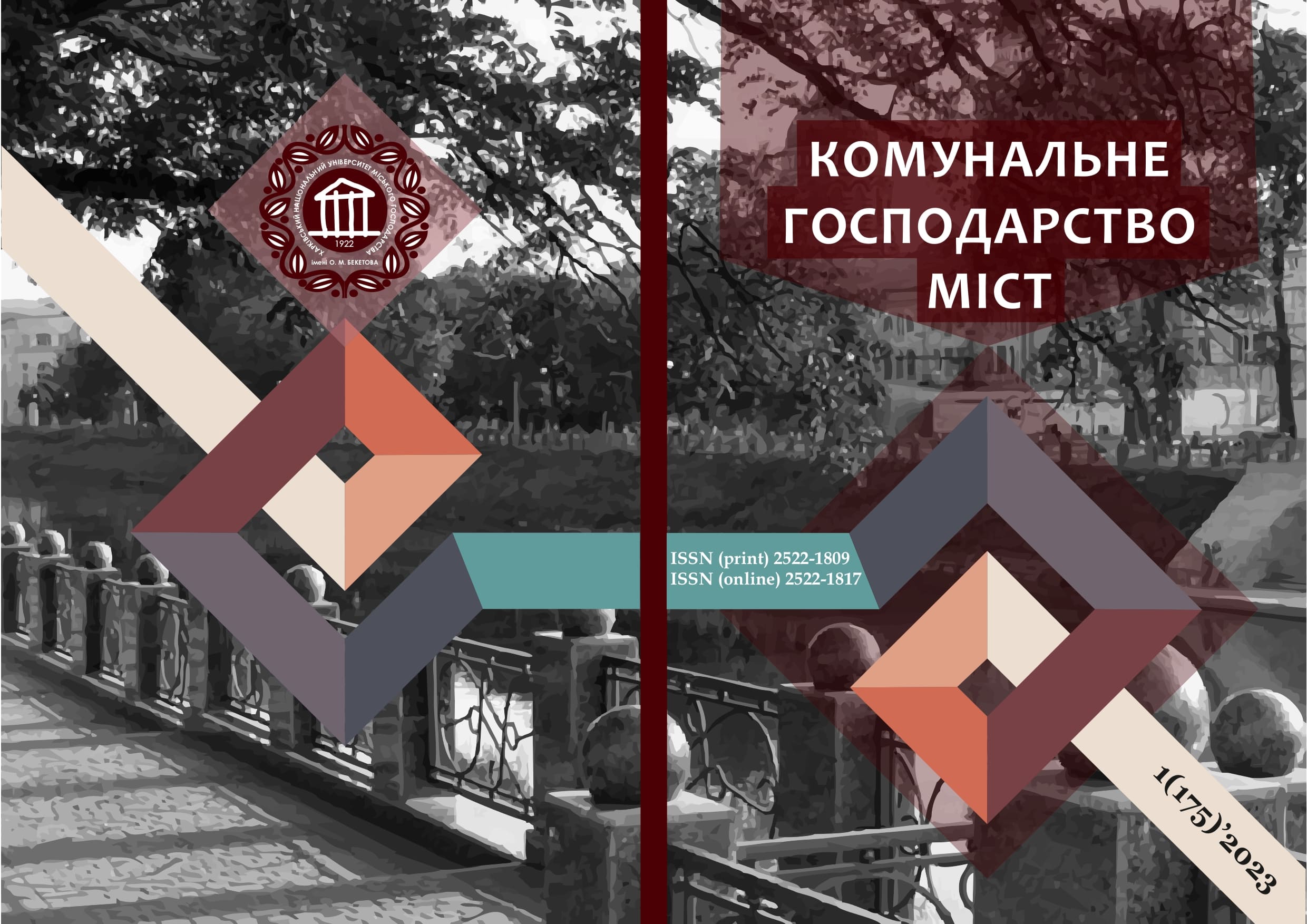THEORETICAL ASPECTS OF AVOIDING DELAMINATION OF COMPOSITE MATERIALS DURING STRENGTHENING OF REINFORCED CONCRETE STRUCTURES
DOI:
https://doi.org/10.33042/2522-1809-2023-1-175-32-38Keywords:
system of composite materials, external reinforcement, FRP strengthening, composite polymer reinforcement, reinforced concrete, failure mode, calculation, delaminationAbstract
The scientific work is devoted to the improvement of the calculation methodology of reinforced concrete elements, using verification of the FRP delamination prevention, during structures strengthening with a system of composite materials (SCM) from various fibers types. During strengthening of reinforced concrete elements with composite material systems, the role of adhesion between concrete and FRP is of great importance due to the fragility of the failure mechanism due to delamination (loss of adhesion). The adhesion strength is generally much higher than the tensile strength of the concrete, so delamination always starts in concrete itself with the separation of FRP layer of different thickness. According to the load-bearing capacity requirements, such a failure mechanism should not precede the failure of the strengthened element during bending or shear. To solve the problem of possible strengthening delamination of composite materials systems, it is necessary to consider different failure modes of FRP. Due to imperfection of domestic building codes, a detailed analysis of the solution to the problem of FRP delamination was carried out in accordance with the recommendations of a number of foreign regulatory documents (ACI, CNR, FIB). The main failure modes, with subsequent initiation of delamination of FRP material from concrete base, are systematized, namely: FRP delamination due to surface irregularities, separation of FRP due to shear cracks, longitudinal shear stresses in the yield zone, excessive deformations in FRP material (FRP rupture), longitudinal shear stresses near the FRP edges, failure in anchoring (fixing) zone of FRP material. Six criterions are proposed that need to be verified during design of structures strengthening systems with FRP materials. During formulation of specified criterions, the main theoretical aspects necessary for application in structural calculations of the studied connection are given. The results of research can be used in future during the design of structures joints strengthening with systems of composite materials based on carbon fibers, glass, aramid.
References
Yuhazri M.Y., Zulfikar A.J., Ginting А. (2020) Fiber reinforced polymer composite as a strengthening of concrete structures: a review. IOP Conference Series: Materials Science and Engineering. Vol. 1003. 12 p.
Kozhushko V.P, Sova Ya.I., Voronova E.M. (2018) Actuality of application of composite materials for strengthening reinforced concrete balls of flights of bridges. Scientific bulletin of civil engineering. Vol. 93(3). P. 137-143.
Molodid O., Rudnieva I., Bogdan S. (2021) Experimental study of strengthening of metal structures with external reinforcement by the method of gluing high-strength carbon fibre-reinforced polymer (FRP) materials. Roads and bridges. Iss. 24. P. 84–96.
Firsov P.М., Kaafarani Bachar Ali (2021) Method of strengthening calculation of reinforced concrete beam elements with a system of composite materials. Scientific bulletin of civil engineering. Vol. 108(2). P. 36-43
ACI 440.2R-17. Guide for the design and construction of externally bonded FRP systems for strengthening concrete structures. (2017) Farmington Hills: American Concrete Institute, 110 p.
CNR-DT 200/2004. Guide for the design and construction of externally bonded FRP systems for strengthening existing structures. (2004) Rome: Advisory Committee on Technical Recommendations for Construction, 144 p.
FIB14. Design and use of externally bonded fibre reinforced polymer reinforcement for reinforced concrete structures: technical report. (2001) Lausanne: International Federation for Structural Concrete, 130 p.
EN 1992-1-1:2004. Eurocode 2: Design of concrete structures. Part 1-1. General rules and rules for buildings. (2004) Brussels: European Committee for Standardization, 225 p.
Kang T., Howell J., Kim S., Lee D. (2012) A state-of-art review on debonding failures of FRP laminates externally adhered to concrete. International Journal of Concrete Structures and Materials. Vol. 6(2). Pp. 123-124.
Fu B., Tang X.T., Li L.J., Liu F., Lin G. (2018) Inclined FRP U-jackets for enhancing structural performance of FRP-plated RC beams suffering from IC debonding. Composite Structures. Vol. 200. Pp. 36–46.
Tworzewski P., Alexy J.K., Barnes W.B. (2022) Intermediate crack debonding of externally bonded FRP reinforcement – comparison methods. Materials (Basel). Vol. 15. 19 p.
Al-Saawany M., El-Sayed A., Al-Negheimish, F. (2022) Inclined U-wrap anchorage for preventing concrete cover separation: experimental study and design method. Journal of Composites for Construction. Vol. 26. – Issue 4. – 10 p.
Chunyang J., Weiwen L., Chengyue H., Feng X. (2017) Data analysis on fiber-reinforced polymer shear contribution of reinforced beam shear strengthened with U-jacketing fiber-reinforced polymer composites. Journal of Reinforced Plastics and Composites. Vol. 36(2). Pp. 98–120.
Rekomendatsii shchodo zastosuvannia kompozytnykh materialiv firmy Sika dlia pidsylennia zalizobetonnykh konstruktsii: tekhnichnyi zvit / А.М. Bambura, О.B. Hurkivskyi. - Kyiv: DP NDIBK, 2014. – 45 s.
Downloads
Published
How to Cite
Issue
Section
License
The authors who publish in this collection agree with the following terms:
• The authors reserve the right to authorship of their work and give the magazine the right to first publish this work under the terms of license CC BY-NC-ND 4.0 (with the Designation of Authorship - Non-Commercial - Without Derivatives 4.0 International), which allows others to freely distribute the published work with a mandatory reference to the authors of the original work and the first publication of the work in this magazine.
• Authors have the right to make independent extra-exclusive work agreements in the form in which they were published by this magazine (for example, posting work in an electronic repository of an institution or publishing as part of a monograph), provided that the link to the first publication of the work in this journal is maintained. .
• Journal policy allows and encourages the publication of manuscripts on the Internet (for example, in institutions' repositories or on personal websites), both before the publication of this manuscript and during its editorial work, as it contributes to the emergence of productive scientific discussion and positively affects the efficiency and dynamics of the citation of the published work (see The Effect of Open Access).

